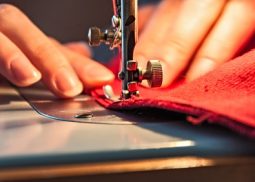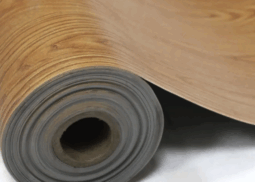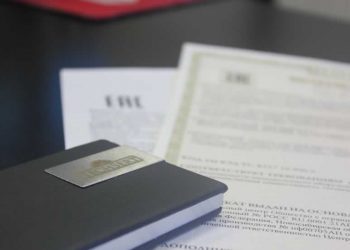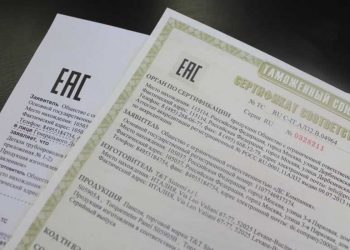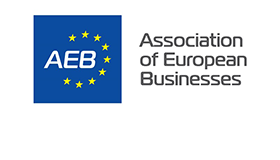EAC Certification of Clothing in Russia: A Comprehensive Guide
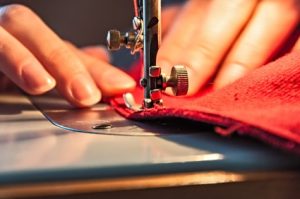
The EAC certification of clothing is a legally mandated procedure in the Russian Federation designed to ensure that textile products meet the stringent safety standards outlined in the Technical Regulations of the Customs Union “On the Safety of Light Industry Products” (TR CU 017/2011). This regulation aims to protect consumers by verifying the quality and safety of clothing sold within the Customs Union, which includes Russia, Belarus, Kazakhstan, Armenia, and Kyrgyzstan. Successful completion of the certification process results in the issuance of either a declaration or a certificate of conformity, depending on the specific type of clothing.
Mandatory EAC Declaration of Conformity for Adult Clothing
The majority of adult clothing, excluding items classified as underwear and hosiery, falls under the requirement for mandatory declaration of conformity. This category encompasses second and third-layer garments. Second-layer clothing includes items worn directly over underwear or a first layer, such as dresses, blouses, suits, trousers, coats, and jackets. Third-layer clothing refers to outerwear designed to provide protection against the elements, such as heavier coats and jackets. For these types of adult clothing, manufacturers and importers are required to declare that their products conform to the safety standards stipulated in TR CU 017/2011. This declaration is based on testing conducted by accredited laboratories.
EAC Certification for Adult Underwear and Hosiery
In contrast to the declaration process, adult underwear (including briefs, T-shirts, vests, and tops) and hosiery (such as socks and tights) necessitate mandatory EAC (Eurasian Conformity) certification. This certification process is more rigorous than declaration and involves a thorough assessment of the product and its manufacturing processes by an accredited certification body. Upon successful evaluation and testing, an EAC certificate is issued, confirming compliance with the applicable safety regulations.
EAC Certificate and EAC Declaration of Children’s Clothing
The regulations governing children’s clothing are particularly stringent due to the vulnerability of this consumer group. Generally, the certification of children’s clothing is mandatory. However, an exception exists for third-layer clothing (jackets, overalls, coats, raincoats) intended for children over three years of age, which are subject to mandatory declaration of conformity instead. For clothing and other products intended for infants and children aged 0 to 3 years, an additional requirement is the mandatory acquisition of a Certificate of State Registration issued by Rospotrebnadzor, the Federal Service for Surveillance on Consumer Rights Protection and Human Wellbeing. This certificate serves as the primary document confirming the safety and hygienic properties of these products.
Mandatory Certification of Special-Purpose Clothing (PPE)
Clothing designed for specific professional purposes, categorized as Personal Protective Equipment (PPE), undergoes mandatory certification according to the requirements outlined in the Technical Regulations of the Customs Union TR CU 019/2011 “On the Safety of Personal Protective Equipment.” This regulation ensures that specialized workwear provides adequate protection against various workplace hazards.
Cancellation of Sanitary and Epidemiological Examinations
It is important to note that previous legislative requirements for sanitary and epidemiological examinations and the issuance of hygienic certificates have been abolished in the Russian Federation. Currently, these are no longer required for clothing certification.
Eligibility for Certification and Declaration
Both individual entrepreneurs and legal entities, regardless of their registration form, possess the right to obtain a certificate or declaration of conformity for clothing, including products of their own manufacture. However, a crucial prerequisite is that the enterprise must be officially registered within the Russian Federation or in one of the member countries of the Customs Union. Significantly, documents cannot be issued to individuals or self-employed citizens, as the Organization’s Main State Registration Number (OGRN) of the applicant organization is a mandatory field during the registration process.
Procedure for Obtaining Certification and Declaration
The process for both certification and declaration of clothing follows a structured approach:
- Submission of Documentation and Samples: The manufacturer or importer initiates the process by providing a comprehensive package of necessary documents and representative product samples to an accredited certification center. The specific documents required may vary depending on the type of clothing and the chosen certification scheme.
- Laboratory Testing: The submitted product samples are then forwarded to an accredited laboratory for rigorous testing to assess their compliance with the relevant technical regulations. Following the completion of these tests, the laboratory issues a detailed test report documenting the findings.
- Issuance of Certificate or Declaration: Based on the positive results documented in the test report, a certificate of conformity (for products requiring certification) or a declaration of conformity (for products requiring declaration) is issued by the certification body. Information regarding the issued certificate is subsequently published in the unified electronic register of certified products. These certificates and declarations are valid throughout Russia and all other member states of the Customs Union.
Grouping of Clothing for Certification Purposes
During the certification process, clothing items are meticulously categorized into distinct groups, with each group assigned a specific Harmonized System (HS) code. It is crucial to understand that different product subgroups within the technical regulations (TR CU 017) cannot be combined under a single certificate. For instance, shirts and windbreakers, despite both being outerwear, belong to different subgroups and therefore require separate certification documents.
Calculating the Number of Certificates
While a precise calculation may require expert assessment, it is possible to obtain a rough estimate of the total number of certificates needed. A general rule is that one product group necessitates one certification document, particularly when considering the certification of broad categories such as men’s and women’s clothing. In the case of mandatory declaration, the variety of fabric compositions within a product type does not typically affect the number of declarations required; the primary factor is the classification of the goods into a specific type.
Examples of Clothing Subject to EAC Declaration
A wide range of adult clothing items are subject to mandatory declaration, including:
- Second-layer outerwear: Skirts, dresses, blouses, sundresses, shirts, trousers, overalls, shorts, jackets, suits, vests, and blazers.
- Third-layer outerwear: Jackets, coats, short coats, and raincoats.
- Second-layer knitted outerwear: Jumpers, sweaters, jackets, vests, sweatshirts (hoodies, sweatshirts), turtlenecks, dresses, cardigans, tunics, skirts, and trousers.
- Second-layer homewear: Dressing gowns, skirts, trousers, blouses (both in sets and as separate items).
- Third-layer genuine leather products.
- Natural fur products.
- Knitted shawl and scarf products: Scarves and shawls.
- Scarf and scarf products: Scarves, shawls, and stoles.
- Sewing headwear: Hats, caps, panamas, and baseball caps.
- Knitted headwear: Hats and berets.
Examples of Clothing Subject to Certification
The following categories of clothing typically require mandatory certification:
- Knitted items of the first layer: T-shirts, tank tops, tops, and pajamas.
- Underwear: Panties, bras, and corsetry.
- Swimwear: Swimming trunks, bathing shorts, and swimsuits.
- Hosiery: Socks, tights, stockings, and leg warmers.
Simplified Calculation Option
For a more accurate and straightforward assessment of certification requirements, it is recommended to provide a detailed list of the specific clothing products to specialized certification experts. These professionals can promptly process the information and provide a comprehensive calculation of the necessary certification procedures and associated costs.
Process of Receiving a Declaration on Clothing
Obtaining a declaration of conformity involves the following steps:
- Application and Layout Preparation: Upon receiving an application for declaration, the certification body prepares a draft layout of the declaration and submits it to the applicant for verification and approval.
- Laboratory Testing of Samples: Once the declaration layout is approved, representative product samples are sent to an accredited laboratory for testing in accordance with the requirements of TR CU 017.
- Test Report and Layout Submission: Following the completion of testing, the laboratory issues a test report detailing the results. A copy of this test report is then uploaded to the official registry alongside the approved declaration layout.
- Registration in the Registry: The final stage involves the applicant registering the declaration in the unified registry. This requires the applicant to log in to their personal account on the Rosaccreditation website using their electronic digital signature, select the relevant declaration from the list of prepared documents, and click the “publish” button. Upon successful publication, information about the registered declaration becomes publicly available in the registry, signifying the legal conformity of the declared products.
Clarification on Developing Technical Conditions (TU) for Clothing Certification:
For manufacturers of clothing within Russia, a point of clarification concerns the necessity of developing individual technical conditions (TU) for product certification. It’s important to note that the Russian Federation maintains a comprehensive system of national standards (GOST) that cover a vast majority of light industry product categories, including most types of clothing. Due to this extensive framework of existing GOST standards, the development of proprietary technical conditions (TU) is generally not required for clothing produced in Russia. These national standards already establish the necessary quality parameters, safety requirements, and testing methodologies for a wide range of apparel.
Navigating GOST Standards:
Should there be uncertainty regarding the applicability of a specific GOST standard to a particular clothing product, manufacturers are advised to proceed with the certification application process. In such instances, when completing the application form, the section pertaining to the technical standard can be left blank. Our certification specialists possess the expertise and resources to identify the relevant and currently applicable GOST standard for the specified product. This ensures that the certification process adheres to the correct regulatory framework without placing the burden of standard identification solely on the applicant.
Example of Compliant Product Labeling:
- Proper labeling is a critical aspect of placing clothing products on the market within the Eurasian Economic Union (EAEU), which includes Russia. The information presented on the product label must strictly adhere to the requirements outlined in the EAEU’s technical regulations (Customs Union – CU). To provide clarity, a comprehensive example of a correctly filled product label is detailed below:
- Product name: (Specify the precise name of the garment, e.g., “Women’s Cotton T-Shirt”)
- Size: (Indicate the size according to the applicable sizing system, e.g., “M”, “48”)
- Brand: (State the registered brand name of the product, if applicable)
- Composition: (Clearly list all materials used in the garment’s construction, along with their percentage composition, e.g., “100% Cotton”, “80% Polyester, 20% Elastane”)
- Manufacturer’s name: (Provide the full legal name of the manufacturing entity)
- Address: (Include the complete legal address of the manufacturer)
- Phone (for receiving complaints): (State a valid telephone number for consumer inquiries and complaints)
- E-mail: (Provide a functional email address for consumer communication)
- Product production date: (Indicate the date of manufacture, typically month and year, e.g., “05/2025”)
- EAC sign: (The product must bear the EAC (Eurasian Conformity) mark, signifying compliance with EAEU technical regulations. The guidelines for the size and placement of the EAC mark should be strictly followed.)
- Care information (ironing and washing): (Provide clear and concise care instructions, including recommended washing temperature, drying method, ironing temperature, and any other relevant care symbols or text.)
Strategies for Cost Optimization in Certification:
Manufacturers can strategically optimize the costs associated with clothing certification by carefully considering the scope of their applications, particularly concerning declarations of conformity and certificates of conformity.
Declarations of Conformity: For products classified similarly (e.g., 2nd layer garments like dresses and trousers), declarations of conformity are often valid for an extended period, up to 5 years. Importantly, once a declaration is registered, making amendments to the document, such as adding new product types or material compositions, is not permissible. To leverage the long validity period and avoid the need for repeated declarations, it is advisable to include all product variations that fall within the same classification group at the time of the initial application, even if those products are not currently in production but are anticipated within the declaration’s validity timeframe. The number of fabric compositions listed within a declaration does not typically affect the overall cost.
Certificates of Conformity: In contrast to declarations, the number of material compositions does have a direct impact on the cost of obtaining certificates of conformity, for example, for products like T-shirts and tank tops. Each unique fabric composition necessitates separate testing and the generation of an individual test protocol. This translates to increased testing expenses for each additional material variant. Therefore, when applying for certificates of conformity, it is beneficial to encompass all potential product options and material variations within a single application, even if it entails a slightly higher initial cost. This proactive approach will prevent the need to obtain new certificates and incur further testing costs each time a new material is introduced into the production process. While the initial outlay may be marginally higher, it yields significant long-term cost savings by avoiding repeated certification procedures.
Seeking Expert Assistance:
For companies that require mandatory permitting documentation but lack the time or resources to thoroughly review the relevant regulations and guidelines, a practical solution is to simply provide a comprehensive list of the products intended for certification. The specialists at our certification center possess in-depth knowledge of the current regulatory landscape and can provide expert consultation on all aspects of the certification process, addressing any specific questions or concerns. By entrusting the interpretation of regulations and the nuances of the certification procedure to experienced professionals, companies can ensure compliance, optimize costs, and streamline the process of bringing their clothing products to the Russian and EAEU markets.
TechSert Group, thanks to its team of high qualify professionals, helps companies in more than 70 countries to prepare all the necessary documentation and procedures to attain Gost and EAC certifications. Furthermore it can rely on its in-house certification body to assure tje highest level of quality at every step of the certification process.

